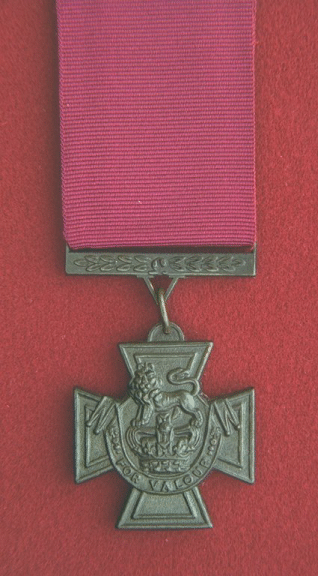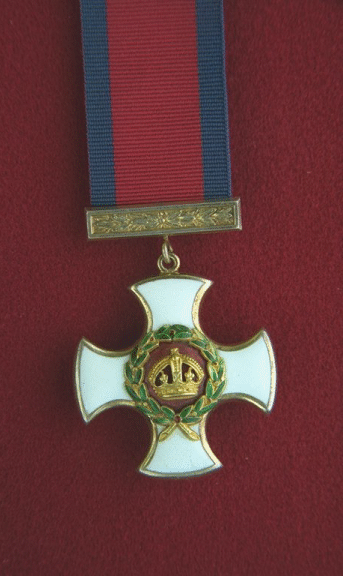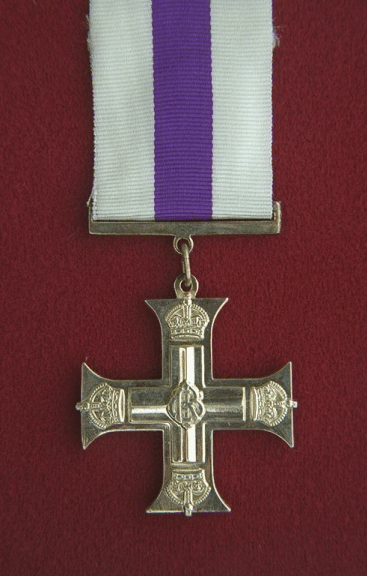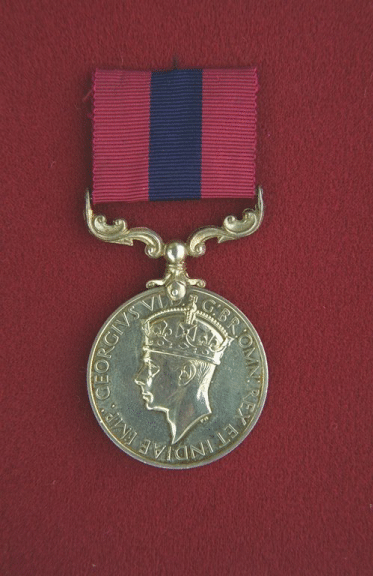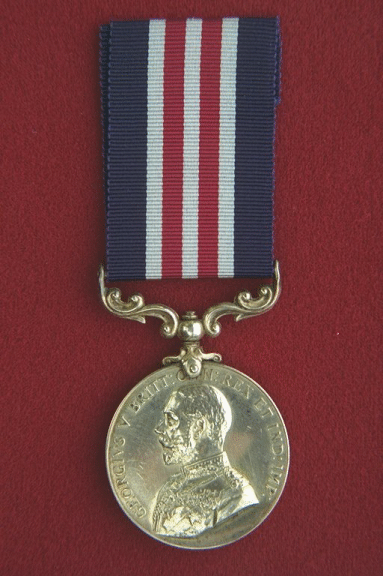Place of Birth: Country Harbour, Guysborough County
Mother's Name: Viola (McNeil) Hayne
Father's Name: William Hayne
Date & Location of Enlistment: March 24, 1916 - New Westminster, BC
Regimental Number: 790031
Rank: Private
Force: Canadian Expeditionary Force
Regiments: 131st (Westminster Fusiliers of Canada); 30th Reserve Battalion; 47th (British Columbia) Battalion
Location of service: Canada, England, & France
Occupation at Enlistment: Fisherman
Marital Status at Enlistment: Married
Next of Kin: Mrs. Lilly Alice Hayne (wife)
*: 1901 census lists James Arthur Hayne's birthday as August 18, 1892.
*****
By 1911, Arthur's mother Viola mother had passed away, leaving his father William to care for the family's three youngest children. Arthur had also moved to Red Deer, Alberta, finding work there as a miner. He eventually moved on to British Columbia, where he found employment in a fishing camp. Here, he met Lilly Alice Fisk, sister of his employer. A native of Norwich, England, Lilly had emigrated to Canada to work as a cook in her brother's camp. On September 12, 1914, Arthur and Lilly were married and took up residence in Steveston, a small community south of Vancouver. Within a year, their first child - Gordon - was born, followed shortly afterward by a daughter, Mary Frances.
 |
| James Arthur Hayne (c. 1915) |
Like many young men of his generation, Arthur took an active interest in the military activity that spread across Canada after the outbreak of war in Europe. He enlisted in the 104th Regiment (Westminster Fusiliers of Canada), founded in 1910 as part of Canada's Primary Reserve. With the outbreak of war, the 104th became a training unit for Canadian Expeditionary Force battalions, in addition to its traditional role as a home defence unit.
During the war, the 104th recruited and trained over 6500 men from the New Westminster - Fraser Valley area, supplying manpower to two British Columbia regiments. The 47th Battalion was authorized on November 7, 1914 and was formed in February 1915, its initial personnel consisting of 12 officers and 608 "other ranks" recruited from the 104th. A second regiment - the 131st Battalion - was authorized on December 22, 1915 and immediately launched a recruitment campaign. On March 24, 1916, Arthur Hayne made the decision to enlist for overseas service, joining the newly created battalion. At the time, he stood 5' 6 1/2", with dark complexion, grey eyes and dark brown hair. The 25-year-old father of two young children now prepared to march off to war.
Arthur spent the next few months in British Columbia, where the regiment trained in preparation for its transfer overseas. In late October, the soldiers of the 131st travelled by train across Canada, embarking at Halifax aboard the S. S. Caronia on November 1. Arriving in England on November 11, the 131st was disbanded two days later, its members to be dispersed among existing units. Arthur and the majority of his comrades were absorbed by the 30th Reserve Battalion and remained in England awaiting transfer to regiments in the field. On November 27, Pte. James Arthur Hayne was officially assigned to the 47th Battalion, the unit with which he would serve for the duration of his war experience.
*****
 |
| Cap Badge of the 47th Battalion |
It wasn't long before Arthur and his inexperienced companions received their first taste of "life" at the front. The battalion war diary reported "considerable sniping [but] little shelling" the day after their arrival in the trenches. The situation remained quiet for several days, although four men were wounded on December 22. The 47th was relieved of front line duty during the afternoon and evening of December 25, 1916, returning to the front trenches one week later, on New Year's Eve. By this time, the weather had become cold and damp, and the men were subjected to frequent fire from German trench mortars.
Winter at the front was a comparatively quiet time, as far as military activity was concerned. Aside from the occasional trench raid and exchanges of sniper and artillery fire, the men focused primarily on the task of surviving the cold, wet conditions. Throughout the months of January and February 1917, the 47th fell into the routine of front line duty, followed by a week of rest in relief positions close to the front. The weather remained cold - for instance, the war diary reported a temperature of 5 to 10 degrees Fahrenheit (-15 to -12 Celsius) on February 4. The frozen ground eliminated the muddy conditions but made trench repair difficult, the war diary commenting that "sand bags can only be filled from inside the dugouts and mines".
Arthur and the men of the 47th endured frequent artillery fire at times. On February 10, for instance, "the enemy threw over quite a number of 'Rum Jars' [,] 'Minnies' and 'Coal Boxes' [but there were] no casualties." Three days later, a small group participated in a successful night raid on the German trenches, returning with 53 prisoners. The raiding party was honoured the following day with an inspection by none other than Field Marshall Sir Douglas Haig, Commander-in-Chief of British forces.
After three months in rotation at the front, Arthur and the men of the 47th moved to billets at Chateau de la Haie on March 7 for rest and training. While the men endured an 8-mile and 13-mile march during their week-long "break", they were also treated to baths, a boxing tournament in the YMCA hut, and even a visit from Canadian Prime Minister, Sir Robert Borden. Arthur and the new recruits also had the opportunity to test their marksmanship on the firing range, although the battalion's officers were not impressed with the results. The war diary commented that "[the] new drafts show need of preliminary musketry instruction".
On March 14, Arthur and the battalion returned to the front lines, where a select group was once again chosen to participate in a night raid early in the morning hours of March 16. This time, the raiding party encountered much stiffer resistance than the February action, as 8 men were killed, 31 wounded and 9 missing during the mission. The following day, the war diary reported that "[a] shell landed in [the trench] at [the] door of B. H. Q. [battalion headquarters] - destroyed [the] cook House [and] hitting our famous chef… in [the] right thigh". Luckily, the men were relieved of front line duty two days later without further significant incidents.
The 47th spent the following week in billets, the men participating in work parties burying communication cables. Enemy aircraft and observation balloons were active, resulting in considerable artillery shelling of front line and support positions. When Arthur and the battalion returned to the front line trenches on March 25, the bombardment intensified as the Germans fired trench mortars, rifle grenades and artillery shells into their positions. The March 29 war diary entry reported "much destruction in [the] front line trenches with TM's [trench mortars], HE and 27 minutes [of] enfilading from [the] direction of LEVIN." The 47th lost 4 men and another 13 were wounded on that day alone.
On the night of March 31, 100 soldiers from the 47th joined an identical number from the 50th in another night raid on German trenches. Arthur was amongst the soldiers chosen to take part in this daring action. The officer in charge reported that "no man's land was so ploughed up and soddened by rain that the going was very heavy, and the hard struggle to cross caused many men to loose [sic] their sense of direction[;] constant supervision was necessary to keep the men right."
As the men approached the German positions, they noted that a large shell crater opposite the 47th's position was filled to the brim with water. The front trench was badly crumbled and unoccupied, with no sign of recent activity. German soldiers were encountered to the right, two prisoners being taken and several others killed. Moving further into German lines, the raiding party observed that the support trenches were not flooded but were "badly battered". At this point, the party encountered stiff resistance from German soldiers, several of whom were killed.
The raiding party set several charges, destroying communication trenches where they remained intact. The officer in command reported that the men were "subject to a heavy fire from artillery of all calibres" throughout the raid. After 28 minutes in the German trenches, the raiding party withdrew and took stock of its losses. One officer and six "other ranks" were killed in the action, 8 "other ranks" were missing, and 43 "other ranks" wounded.
Pte. James Arthur Hayne was amongst the latter, having suffered a gun shot wound to the cheek. He was immediately admitted to the # 12 Canadian Field Ambulance station for treatment. Luckily, the injury was not serious and Arthur was cleared to return to the 47th on April 4. By that time, the battalion had been relieved of front line duty and was training at Coupigny.
On April 8, the 47th reported its battalion strength at 638 "all ranks" as it prepared for its latest assignment, moving from Coupigny to Brio de Berthonvale and assuming a reserve position as part of the 11th Canadian Infantry Brigade. The Canadian Corps was preparing for one of its most significant military endeavours - the attack on German positions at Vimy Ridge. While the battalion was not scheduled to take part in the initial assault, it would be called into action in the days and hours that followed.
At 5:30 am Monday, April 9, an "intense artillery barrage open[ed] on enemy lines at Vimy Ridge - followed by an infantry attack". Two of the battalion's companies took up positions in the support lines, with a third ordered to the front lines. The following day, the remainder of the battalion's soldiers joined two companies of the 85th (Nova Scotia Highlanders) in support of the advancing infantry. As the attack progressed, soldiers of the 47th assumed positions along the newly captured German front lines on Vimy Ridge. A group of soldiers from the battalion was selected to participate in an attack on "the Pimple", the last area of high ground on the Ridge held by German troops.
As the morning of April 12 dawned, heavy snow fell along the ridge. "C" Company of the 47th joined soldiers from the 44th and 50th battalions in a successful assault on "the Pimple" in a driving blizzard. Fortunately, the weather improved the following day. As the fresh snow melted, the 47th moved into trenches abandoned by German soldiers. The battalion's officers described the "state of ground on the ridge [as] very bad". Enemy balloons and Allied planes were active and there was intermittent artillery shelling throughout the day. In the afternoon and evening, the 47th was relieved of front line duty.
 |
| Map displaying position occupied by 47th Battalion at Vimy Ridge. |
The war diary entry for May 1described conditions as "normal", with enemy artillery firing into a wooded area to the left rear of the battalion's position. The 47th's machine guns were "very active", while enemy activity was "below normal". Work parties were active in both the front and support trenches. While the situation was "fairly quiet throughout the day", the diary recorded one casualty: "790031 killed in action".
The 47th Battalion's war diary offers no insight into the circumstances of Pte. James Arthur Hayne's death. Perhaps he was a victim of the intermittent gun fire exchanged along the front lines. He may have been shot by a German sniper. However, the war diary entry for May 2 does record that the "Adjutant conducted burial services of 628227 Lt. Cpl. Thelwall and 790031 Pte. Haynes [sic] just before dawn." Today, Pte. James Arthur Hayne's grave is part of La Chaudiere Military Cemetery, Pas de Calais, France.
Arthur left behind a widow and two small children. During his service in France, he had assigned $ 20 of his monthly pay to his wife Lilly, who also received a monthly $ 20 separation allowance. Having lost their main source of support, the family's future was uncertain. While Lilly was entitled to receive a pension, it would be two months before it was approved. In the meantime, the Canadian government continued to send Arthur's monthly assigned pay to his widow.
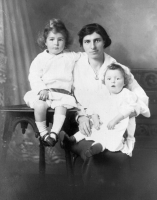 |
| Lilly Alice Hayne with children Gordon and Mary Frances, 1917. |
In 1921, the Memorial Plaque and Scroll and Memorial Cross issued to surviving family members of soldiers killed in action were sent to Arthur's oldest child and only son, Master Gordon Hayne, ℅ Mrs. Barker, 3580 Commercial Road, Cedar Cottage, BC in 1921. The British War Medal and Victory Medal to which Pte. Hayne was entitled were also forwarded to Gordon on June 27, 1922. That same year, the city of Richmond erected a cenotaph in memory of the city's men who lost their lives during the "Great War". On this solemn occasion, Gordon and Mary Frances Hayne were chosen to unveil the monument. In November 1997, Mary Frances Hayne Emery was present at the city's annual Remembrance Day ceremonies, accompanied by her daughter Edith Marcoux, to mark the 75th anniversary of the cenotaph's unveiling. These events are testimony to the fact that the memory of Arthur's service and sacrifice has fittingly endured over the many years since his tragic death.
*****
Regimental documents of Pte. James Arthur Hayne, No. 790031. Library and Archives Canada. RG 150, Accession 1992-93/166, Box 4192 - 31. Available online.
The Royal Westminster Regiment. National Defence Canada. Available online.
War Diaries of the First World War: 47th Canadian Infantry Battalion. Library and Archives Canada. RG9 , Militia and Defence , Series III-D-3 , Volume 4940 , Reel T-10746-10747
File : 438. Available online.
We Will Remember Them: Private James Arthur Hayne. City of Richmond, British Columbia, Canada. Available online.
